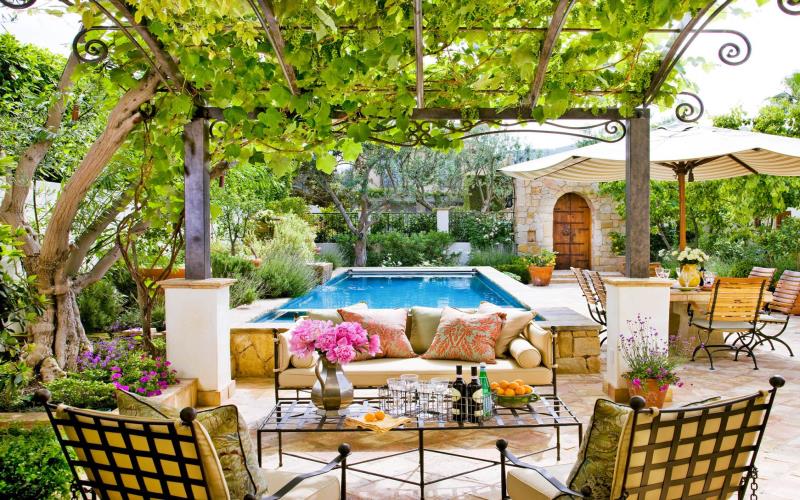Are you yearning for a serene retreat right in your backyard? Enhancing your outdoor privacy can transform an ordinary space into a secluded haven, perfect for relaxation and entertaining. In this blog post, we will explore various techniques to enhance outdoor privacy, catering to both homeowners and outdoor enthusiasts. Whether you’re looking to create a lush green barrier, install stylish fencing, or utilize modern technologies, this guide covers it all.
Understanding the Importance of Outdoor Privacy
A private outdoor space is more than just a luxury—it’s essential for peace of mind. It allows homeowners to enjoy their gardens, patios, and backyards without prying eyes. For outdoor enthusiasts, privacy enhances the experience of connecting with nature. You’ll feel more at ease hosting gatherings, playing with your children, or simply unwinding after a long day.
In this post, we’ll discuss practical solutions to enhance outdoor privacy, ensuring your space remains both functional and beautiful. Let’s begin by assessing your unique privacy needs.
Assessing Your Privacy Needs
Before making any changes to your outdoor space, it’s crucial to evaluate your current setup. Start by examining the layout of your yard. Note any existing features such as trees, fences, or walls that could contribute to or detract from privacy. Consider the vantage points from neighboring properties and public spaces.
Next, think about the desired level of privacy. Do you want complete seclusion, or are you comfortable with partial visibility? Your preferences will determine the types of solutions best suited for your space. Keep in mind factors like climate, budget, and maintenance requirements as you plan your privacy enhancements.
Creating Privacy with Plants
Using plants to create natural privacy screens is a beautiful and eco-friendly option. Begin by selecting the right greenery for your climate. Evergreen plants, such as arborvitae and cypress, provide year-round coverage. For a lush, tropical feel, consider bamboo or palms.
Planting hedges is another effective way to enhance privacy. Choose fast-growing varieties like privet or boxwood for quicker results. Ensure proper spacing and maintenance to keep your hedge healthy and dense.
Incorporating climbing plants on trellises or pergolas can also add vertical privacy. Vines like ivy, clematis, and wisteria grow quickly and can cover structures beautifully. This approach not only creates privacy but adds a touch of elegance to your outdoor space.
Functional and Aesthetic Fencing
Fencing is a classic solution for outdoor privacy. With a variety of materials and styles available, you can find an option that suits both your privacy needs and aesthetic preferences. Wooden fences offer a warm, natural look and can be customized with different stains or paints. However, they require regular maintenance to prevent rot and insect damage.
Vinyl and composite fences are low-maintenance alternatives that mimic the appearance of wood. They are resistant to weathering and typically come with long warranties. Metal fences, such as aluminum or wrought iron, provide a sturdy and durable option. These can be designed with intricate patterns to add a decorative element while maintaining privacy.
When choosing a fence, consider its height and opacity. Taller fences provide better privacy but may require local permits. Combining different materials, like a solid wood base with decorative metal panels, can create a unique and functional design.
Privacy Panels and Structures
Privacy panels and structures like pergolas and gazebos can effectively enhance outdoor privacy. Privacy panels, available in materials such as wood, metal, or composite, can be strategically placed to block unwanted views. They can also act as windbreaks and add visual interest to your garden.
Pergolas and gazebos offer a dual function—providing shade and seclusion. By adding curtains, screens, or climbing plants, these structures can become cozy, private retreats. Consider placing them near seating areas or outdoor kitchens to enhance their utility.
For a modern touch, consider using laser-cut metal panels or tensioned sail shades. These options provide privacy while adding contemporary flair to your outdoor space.
Outdoor Privacy Technologies
Modern technology offers innovative solutions for outdoor privacy. Privacy screens, available in retractable or fixed designs, can be easily installed and adjusted as needed. Smart technology, such as motorized screens, allows you to control privacy at the touch of a button.
Sound barriers are another high-tech option, particularly useful in noisy neighborhoods. Acoustic panels or white noise generators can create a more serene environment. These solutions are especially beneficial for those who enjoy outdoor meditation or work-from-home setups.
Integrating these technologies with traditional privacy methods can result in a versatile and highly effective privacy system.
Maintaining Privacy Features
To ensure that your privacy-enhancing elements continue to perform well, regular maintenance is essential. For plants, this means routine pruning, watering, and fertilizing. Check for pests and diseases regularly to keep your greenery healthy.
Fences and structures require periodic inspections for damage. Wooden fences may need re-staining or sealing, while vinyl or composite fences should be cleaned to prevent mold and mildew buildup. If you’re looking for a fence installer like those in Utah, they can also help with metal fences which may require rust treatment and repainting.
Technological solutions, such as motorized screens, should be serviced according to the manufacturer’s recommendations. Regularly check for wear and tear to ensure everything operates smoothly.
Conclusion
Creating a private outdoor space is an achievable goal with the right approach. By assessing your privacy needs, utilizing plants, choosing appropriate fencing, installing privacy panels and structures, integrating modern technologies, and maintaining these features, you can transform your yard into a secluded haven.

